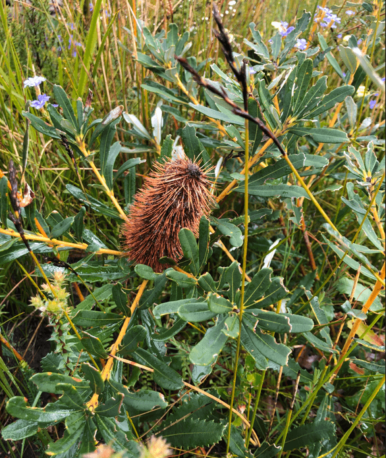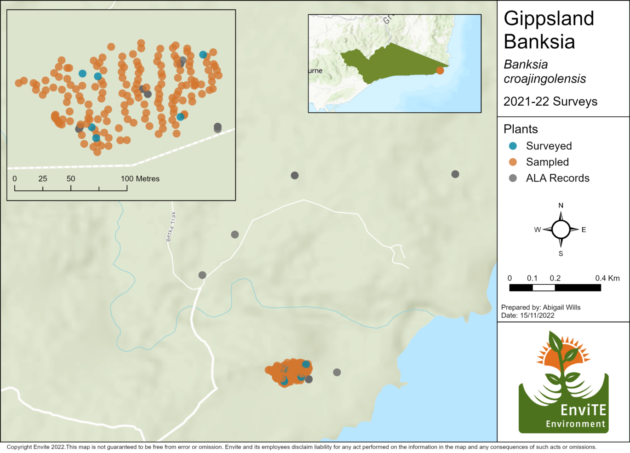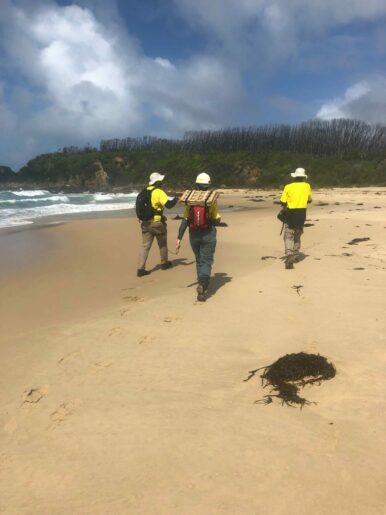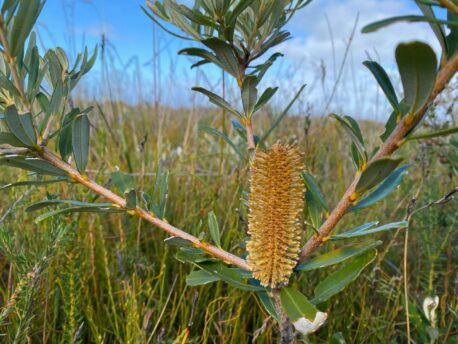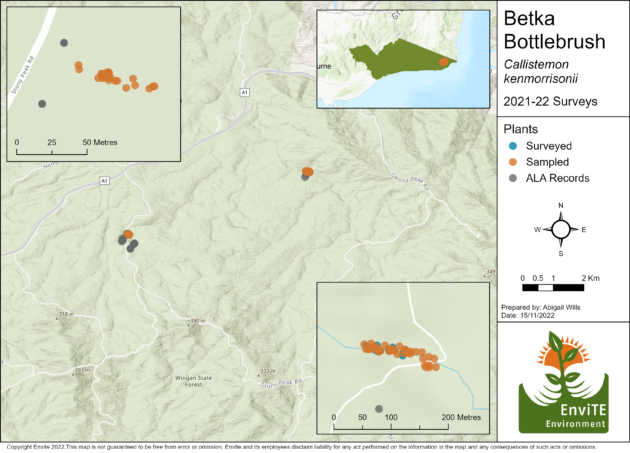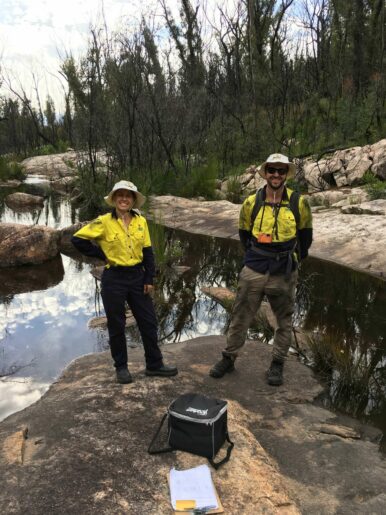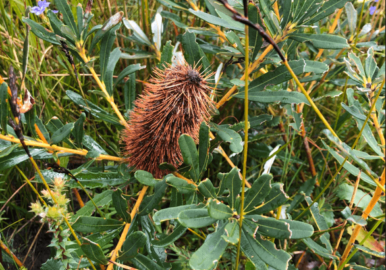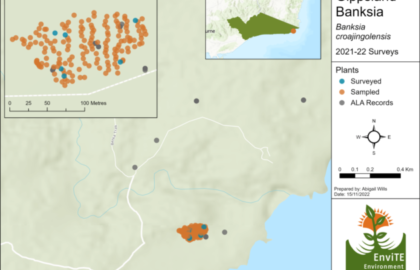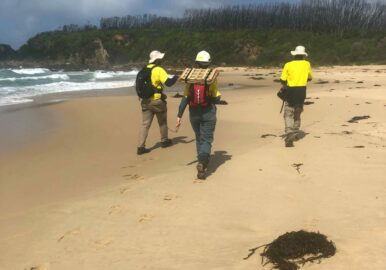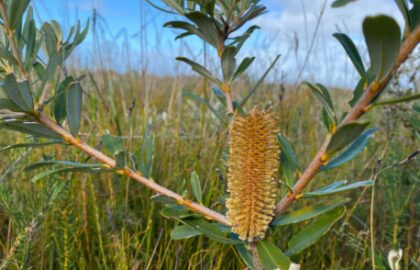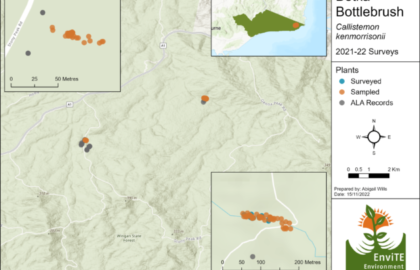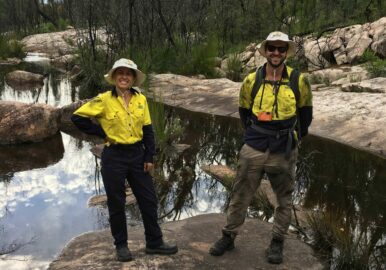Community-led Recovery of the Gippsland Banksia and Betka Bottlebrush
Assessing post-bush fire response of species diversity and resilience
Victorian Government Department of Environment, Land, Water and Planning
Service Classification/s:
Eastern Gippsland, Victoria

Overview:
The Gippsland Banksia (Banksia croajingolensis) is known only from a single drainage line South of Shipwreck Creek in the Croajingolong National Park, a site that was severely burnt in the 2019/2020 megafires. Very little is known about the biology of B. croajingolensis. There is even a question about its origin, with Flora of Victoria suggesting that it may be a hybrid between other species with which it co-occurs.
The Betka Bottlebrush (Callistemon kenmorrisonii) is one of a handful of rare and endemic Callistemons restricted to Far East Gippsland. C. kenmorrisonii is only known from two small populations growing on granite rock bars along the upper Betka River, one where the river intersects Stony Peak Road and one at Roger Track, in Wingan State Forest. Both populations were severely burned in the 2019/2020 Black Summer Bushfires, and have since also been impacted by numerous flooding events following abnormally high rainfall in the years following the fires. There are unanswered questions as to the origin of C. kenmorrisonii, with suggestions that the species may be a hybrid swarm involving C. citrinus and C. subulatus.
Outcomes:
In partnership with La Trobe University and the Friends of Mallacoota, Envite undertook surveys to assess the post-bushfire response of B. croajingolensis and C. kenmorrisonii, combining this with genomic assessment of diversity and structure of resprouting and emerging plants. We recorded 158 stems of B. croajingolensis, which is substantially fewer than the 480 plants observed in recent surveys in the mid-90s (Molyneux 1995), and which we believe to now be restricted to a single drainage line south of Shipwreck Creek. Just 93 surviving C. kenmorrisonii stems were recorded in situ.
The genomic uniqueness of B. croajingolensis is being assessed relative to putative parental taxa (B. marginata and B. integrifolia) and another taxon that is thought to be closely related (B. paludosa). The genomic analysis component of this work aims to help resolve the hybrid hypothesis for C. kenmorrisonii.
Outcomes will lead to policy updates (revising species conservation status where appropriate), practical management recommendations, and guide sourcing of material for ex situ collections for both species. Propagation of seed and cuttings by the Friends of Mallacoota is underway to serve as an insurance population in case of future environmental catastrophes.
This project was funded through a Department of Environment, Land, Water and Planning 2021 Community Volunteer Action Grant – Stream 2 Biodiversity On-ground Action and Stewardship.
Related links:
Project webpage (ResearchGate)
Click on the image to enlarge


